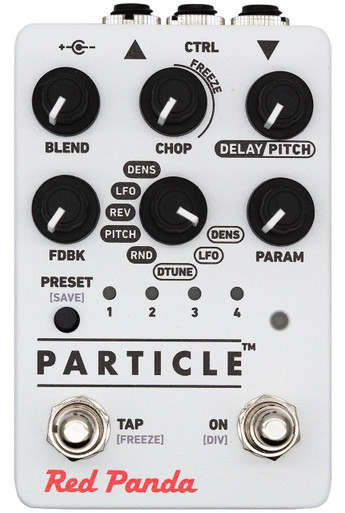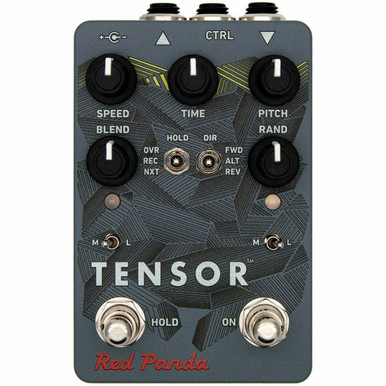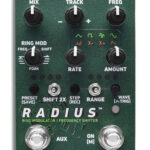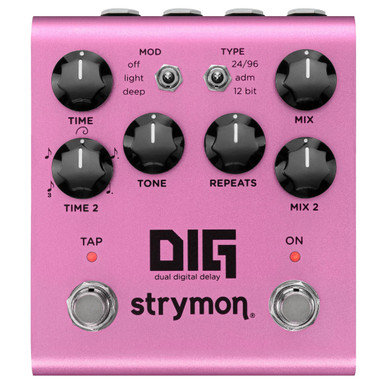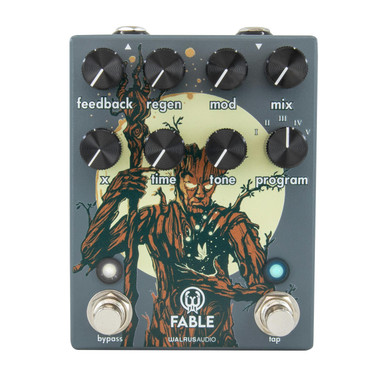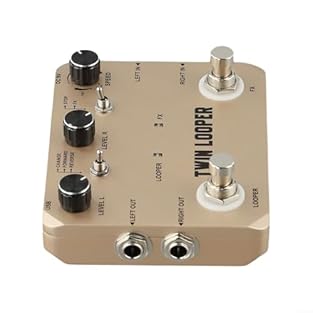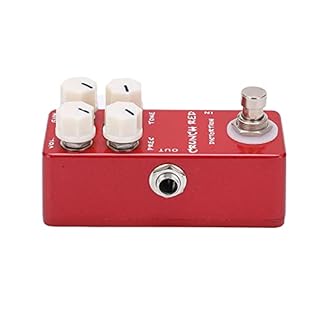Description
Red Guitar Pedals are fresh in, this is a New one & the Just Pedals team think it is a very nice one too. Good news ! This can be delivered straight to your door, quickly and securely, anywhere in the UK & Europe. For more info on this New Guitar Pedals, please read on for full details, demos, videos, reviews and order online.
Absolutely bonkers. Red Panda love a pedal that cuts up your guitar tone in unusual ways – the Particle 2 is the best example in the range. This takes everything from one to 10 in an instant but can also be used in an extremely beautiful, musical setting.
At its core, the Particle 2 is a pitch shifter and delay, with eight wildly different voices to choose from as the base of your sound. From there, it’s up to you how much the pedal stutters, chops and changes, freezes, glides, distorts and melts away at your fingers. You can then save up to four characteristics to recall at the tap of a button.
It’s just one of those pedals you have to hear to believe.
About Red Panda
The boffins at Red Panda are all about pushing the boundaries of what can be done with natural, organic sounds. Forget your classic Klons and mundane reverbs, here it’s all trailblazing new effects using digital technology. This opens up the door for what can be achieved using the likes of guitars, keys and drum machines.
Red Panda are a small company focused on design process lasting 12-24 months. They use automated manufacturing to improve the reliability of their creations. All electronics are fully assembled in the USA, while the enclosures are CNC milled and powder coated in Canada.
Time to experiment.
Here’s what Red Panda say about the Particle 2:
Particle is a granular delay / pitch shifting pedal. It chops your signal into small grains and then rearranges, shifts, and mangles it, using the techniques of granular synthesis in real time. Results range from radical pitch and delay modulation to shimmering repeats to time stretching, stutter, and glitch sounds.
New in version 2
Particle 2 is a complete redesign, incorporating many improvements for live use and better sound quality. The enclosure is smaller, 3” wide with all jacks on top. 127 presets can be stored. The active preset and bypass state are remembered, eliminating pre-show adjustments. Delay time has been extended from 900 ms to 2500 ms, at a higher sampling rate.
Key Features
- 3 pitch modes: detune, density, LFO
- 5 delay modes: random, density, LFO, random pitch, reverse
- Adjustable grain size and density (inter-onset interval)
- Pitch shift +/- 1 octave
- Delay 0-2.5 seconds
- Feedback with adjustable lowpass filter
- Auto-freeze/stutter with adjustable threshold
- Tap tempo/momentary freeze footswitch
- Independent tap divisions for different parameters
- Soft touch bypass (momentary or latching), user replaceable
- Stereo input/output (TRS)
- Assignable expression pedal or remote footswitch port
- Additional parameters via USB MIDI
- Presets (4 on front, 127 via MIDI)
- Assembled in USA. Requires a 9V 250 mA center negative power supply (not included)
